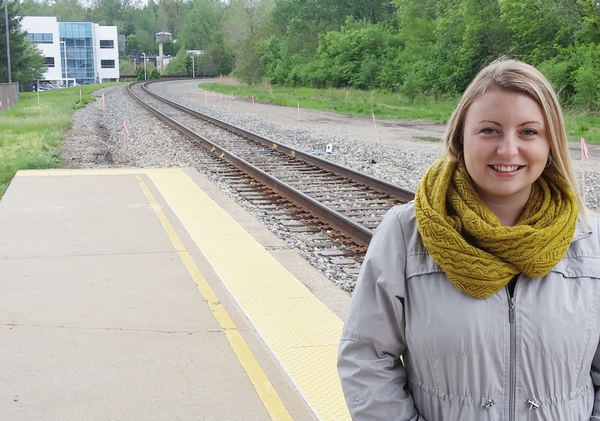To embrace the future of transportation, consider its past – on rails
A recent Bridge article on Southeast Michigan’s Regional Transit Authority (RTA) cites transportation policy experts who say passenger rail service should be re-established between Detroit and Ann Arbor. I agree wholeheartedly. In fact, I’ll go further: Michigan would benefit immensely from passenger rail linking Detroit, Ann Arbor, Lansing, Grand Rapids and Holland.
The findings of a new study demonstrate that this coast-to-coast project could serve more than a million passengers a year, and it could be built at relatively low cost. For about the same price as building 13 miles of four-lane highway, we could have a 186-mile, 79-mph passenger rail service linking our state's biggest cities. Establishing 110-mph service would cost more up front, but could generate millions in profits each year.
Last year I led a coast-to-coast listening tour that – through 16 public meetings and an online discussion forum – gathered input from 575 business leaders, government officials, students and other interested citizens along the potential routes. Some common themes emerged. Local officials and economic developers see rail ridership growing and recognize the investment and jobs it can bring to their communities. Students and young professionals see a convenient way to visit friends or enjoy arts and entertainment in other cities. And business owners recognize the opportunities for growth inherent in connecting Michigan’s largest cities and their important political, educational and cultural institutions.
"The coast-to-coast service would open up new business opportunities in those markets and allow my employees to travel across Michigan and still be productive,” said Richard Sheridan, CEO of Menlo Innovations, an Ann Arbor software design firm. “I've also found that younger workers expect to work and live in a place that does not require them to buy a car. More rail options will improve our talent recruitment and make Michigan a place that fits their idea of a vibrant community."
This effort to link our major population centers by passenger rail is just one of many encouraging developments in the evolution of transportation in Michigan. Transit in Metro Detroit – already seeing important improvements like more buses, more drivers and some routes offering 24-hour service – is poised for transformative change as the M1 Rail project nears completion and southeast Michigan prepares for a millage vote to fund the RTA. Bus Rapid Transit (BRT) has been a big success in Grand Rapids and the city just netted a $57 million federal grant to pursue a second BRT route. Plans for BRT in Lansing also are in the works.
Coast-to-coast passenger rail service will take longer to establish—as will other exciting intercity routes like the proposed Ann Arbor to Traverse City train – but it has the potential to grow our economy, reduce traffic, improve the environment and provide a much more attractive quality of life.
With our recent study showing coast-to-coast rail is worth pursuing, a full feasibility study – including an exploration of potential public-private partnerships – is the next step in the project. As we continue moving this service from intriguing possibility to exciting reality, we hope business leaders, economic developers, university officials and others will join us in telling Michigan policymakers that coast-to-coast passenger rail is an idea whose time has come.
See what new members are saying about why they donated to Bridge Michigan:
- “In order for this information to be accurate and unbiased it must be underwritten by its readers, not by special interests.” - Larry S.
- “Not many other media sources report on the topics Bridge does.” - Susan B.
- “Your journalism is outstanding and rare these days.” - Mark S.
If you want to ensure the future of nonpartisan, nonprofit Michigan journalism, please become a member today. You, too, will be asked why you donated and maybe we'll feature your quote next time!


 Liz Treutel Callin is transportation policy director for the Michigan Environmental Council, and is leading its coast-to-coast passenger rail project.
Liz Treutel Callin is transportation policy director for the Michigan Environmental Council, and is leading its coast-to-coast passenger rail project.